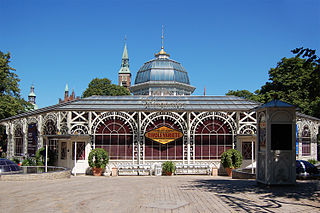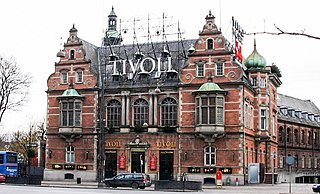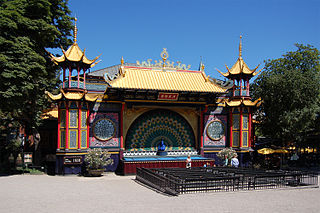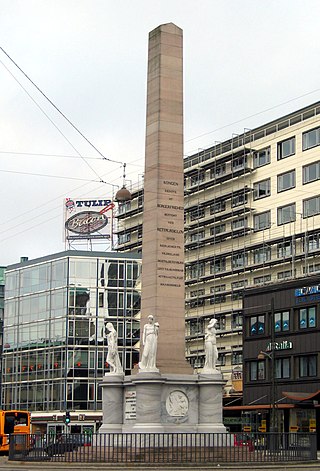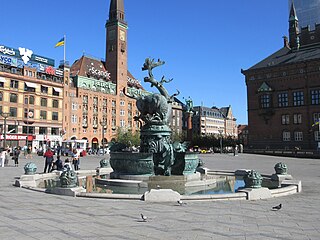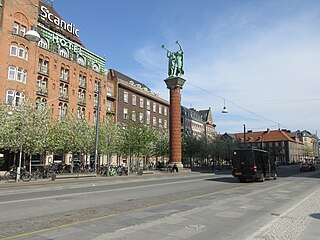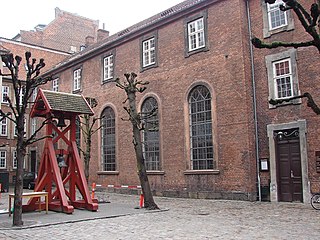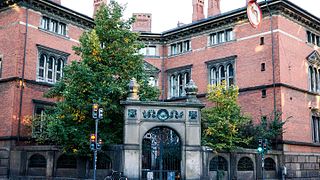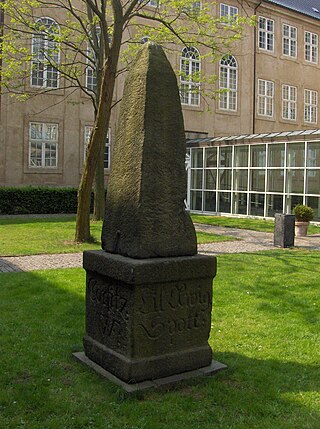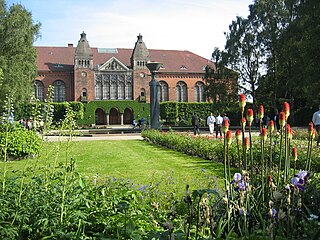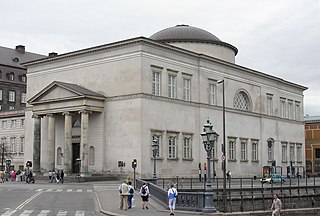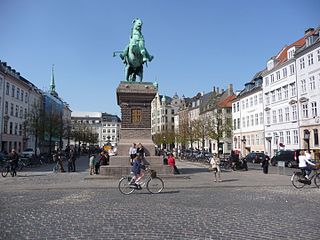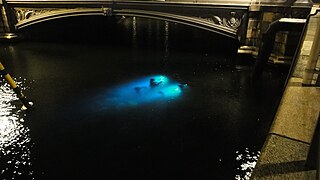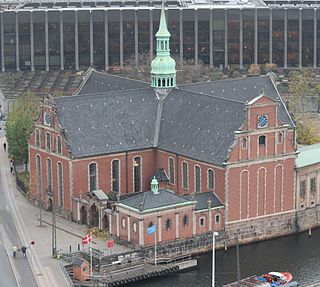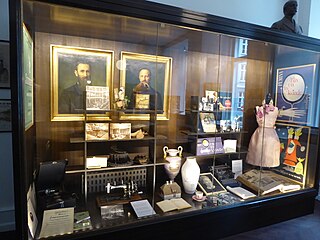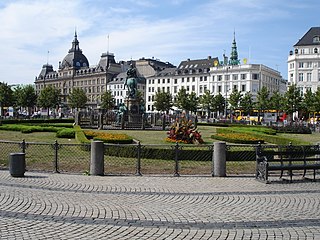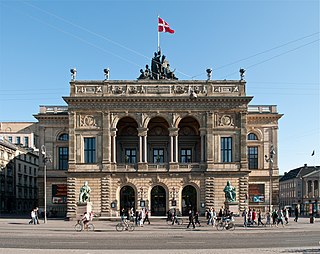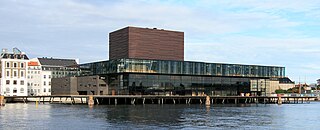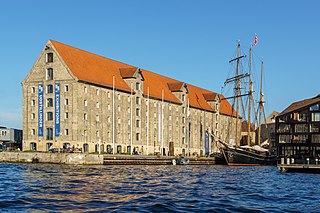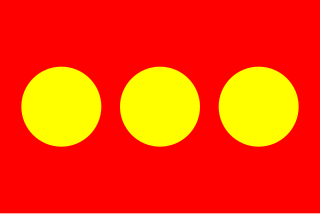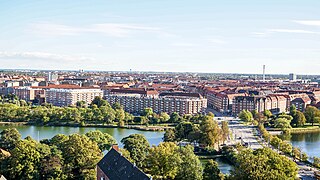Self-guided Sightseeing Tour #1 in Copenhagen, Denmark
Legend
Guided Free Walking Tours
Book free guided walking tours in Copenhagen.
Guided Sightseeing Tours
Book guided sightseeing tours and activities in Copenhagen.
Tour Facts
8.5 km
134 m
Experience Copenhagen in Denmark in a whole new way with our free self-guided sightseeing tour. This site not only offers you practical information and insider tips, but also a rich variety of activities and sights you shouldn't miss. Whether you love art and culture, want to explore historical sites or simply want to experience the vibrant atmosphere of a lively city - you'll find everything you need for your personal adventure here.
Activities in CopenhagenIndividual Sights in CopenhagenSight 1: Tivoli Gardens
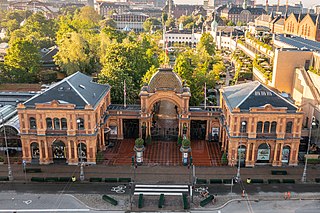
Tivoli Gardens, also known simply as Tivoli, is an amusement park and pleasure garden in Copenhagen, Denmark. The park opened on 15 August 1843 and is the third-oldest operating amusement park in the world, after Dyrehavsbakken in nearby Klampenborg, also in Denmark, and Wurstelprater in Vienna, Austria.
Sight 2: Glassalen
The Glass Hall is a 957-seat theatre venue located inside the Tivoli Gardens in Copenhagen, Denmark.
Sight 3: H.C. Andersen Slottet
Today, the Hans Christian Andersen Palace is the name of the building located on Hans Christian Andersens Boulevard opposite Copenhagen City Hall on the corner of Tivoli. Tivoli acquired it in 1978 and gave it its current name.
Sight 4: Pantomimeteatret
The Pantomime Theatre is an open-air theatre located in the Tivoli Gardens in Copenhagen, Denmark. As indicated by the name, it is primarily used for pantomime theatre in the classical Italian commedia dell'arte tradition which is performed daily. Besides this original function, the theatre leads a second life as a venue for ballet and modern dance.
Sight 5: Frihedsstøtten
The Liberty Memorial, located in front of Central Station in Copenhagen, Denmark, is a 20 meter tall obelisque erected in memory of the peasant reforms in 1788 which led to the abolition of serfdom. The 20 metre tall obelisque is made of sandstone from Nexø on Bornholm and its base is made of Norwegian marble. The four female figures at the base of the obelisque symbolise Bravery, Civic Virtue, Fidelity and the Industrious Cultivation of Land.
Wikipedia: Liberty Memorial, Copenhagen (EN), Website, Inscription Url
Sight 6: Cirkusbygningen
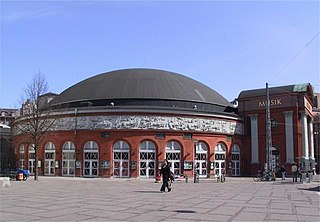
The Circus Building on Axel Torv in Copenhagen, Denmark. is a circular building completed in 1886 to serve as a venue for circus performances. The last circus to use the building was in 1990.
Sight 7: City Hall Square
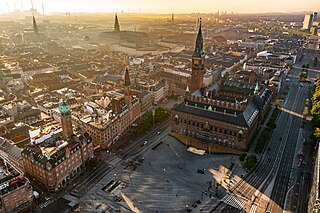
City Hall Square is a public square in the centre of Copenhagen, Denmark, located in front of the Copenhagen City Hall. Its large size, central location, and affiliation with the city hall makes it a popular venue for a variety of events, celebrations and demonstrations. It is often used as a central point for measuring distances from Copenhagen.
Sight 8: Dragon Fountain
The Dragon Fountain is a fountain located in the City Hall Square in Copenhagen, Denmark. It was designed by Joakim Skovgaard in collaboration with Thorvald Bindesbøll and features a bull in combat with a dragon.
Sight 9: Lurblæserne
The Lur Blowers is a monument located next to City Hall in Copenhagen, Denmark, consisting of a bronze sculpture of two lur players mounted on top of a tall terracotta column. The monument was a gift to the City of Copenhagen from the Carlsberg Foundation and New Carlsberg Foundation on the occasion of the centenary of the birth of Carlsberg founder J. C. Jacobsen.
Sight 10: Vartov Valgmenighedskirke
Vartov Church is a church built in 1755 in Løngangstræde in Copenhagen. The church was built as part of the extension of the historic building complex Vartov from 1725. It is the only church in Copenhagen without a tower or dome. The two bells hang in a stack inside Vartov's farm.
Sight 11: Museum of Copenhagen
The Museum of Copenhagen is the official museum of Copenhagen, Denmark, documenting the city's history from the 12th century to the present.
Sight 12: Corfitz Ulfeldts Skamstøtte
Corfitz Ulfeldt's pillar of shame is a stone memorial to the traitor Corfitz Ulfeldt. It was erected in 1663 on Gråbrødretorv, where Ulfeldt had lived, so that the townspeople could spit on it when they passed. It bears the inscription: "Corfitz WF the traitor, Till Æwig Spott, Skam og Skiendsel".
Sight 13: Christiansborg Palace
Christiansborg Palace is a palace and government building on the islet of Slotsholmen in central Copenhagen, Denmark. It is the seat of the Danish Parliament, the Danish Prime Minister's Office, and the Supreme Court of Denmark. Also, several parts of the palace are used by the Danish monarch, including the Royal Reception Rooms, the Palace Chapel and the Royal Stables.
Sight 14: Danish War Museum
The Danish War Museum is a museum of military history and arms on Slotsholmen in central Copenhagen, Denmark. It is located in Christian IV's Arsenal, from which it takes its former name. On 1 July 2018, the name was changed from the Royal Danish Arsenal Museum to The Danish War Museum, in order to make it easier for guest to discern the nature of the museum.
Sight 15: Bibliotekshaven
The Royal Library Garden, often referred to simply as the Library Garden, is a small, somewhat hidden garden between the Royal Library, the Tøjhus Museum, ChristianIV's Supply Depot and Christiansborg Palace on Slotsholmen in central Copenhagen, Denmark. It has a reputation for being one of the most tranquil spots in the city centre.
Sight 16: Danish Jewish Museum
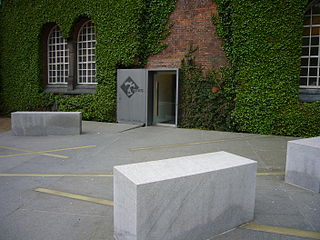
The Danish Jewish Museum, in Copenhagen, Denmark, sits inside the Danish Royal Library’s old Galley House and exhibits Danish Jewish historical artifacts and art. Designed by architect Daniel Libeskind, the building memorializes the story of Danish Jews who were saved from Nazi persecution by their fellow Danes in October 1943. Construction of the Museum began in March 2003 and the museum opened in June 2004.
Sight 17: The Stock Exchange building
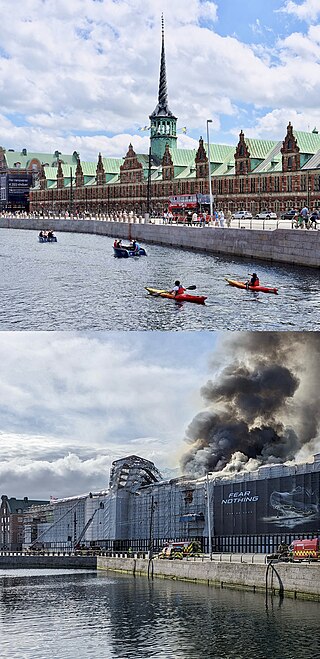
Børsen, is a 17th-century commodity bourse and later stock exchange in the centre of Copenhagen, Denmark. The historic building is situated next to Christiansborg Palace, the seat of the Danish Parliament, on the island of Slotsholmen.
Sight 18: Christiansborg Palace Chapel
Christiansborg Palace Chapel is the church on Slotsholmen in Copenhagen. The church is one of the parts of Christiansborg Palace that are available to the Royal House. It is used for church ceremonies for members of the royal family, mainly baptisms, confirmations and castrum doloris. In addition, it is used by the Folketing for worship at the opening of the Folketing.
Sight 19: Stork Fountain
Join Free Tour*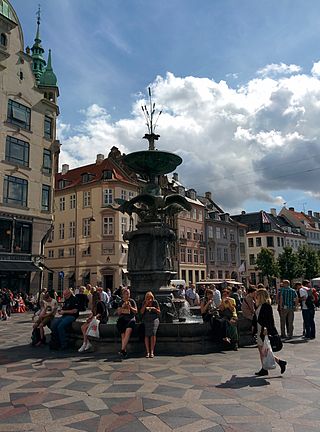
The Stork Fountain is located on Amagertorv in central Copenhagen, Denmark. It was a present to Crown Prince Frederik and Crown Princess Louise in connection with their silver wedding anniversary in 1894. It depicts three storks about to set off.
Sight 20: Amagertorv
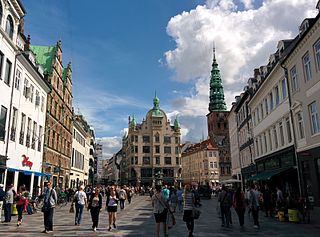
Amagertorv is a public square in the district of Indre By in central Copenhagen, Denmark. Today it forms part of the Strøget pedestrian zone, and is often described as the most central square in Copenhagen. Second only to Gammeltorv, it is also one of the oldest, taking its name from the Amager farmers who in the Middle Ages came into town to sell their produce at the site.
Sight 21: Højbro Plads
Højbro Plads is a rectangular public square located between the adjoining Amagertorv and Slotsholmen Canal in the City Centre of Copenhagen, Denmark. It takes its name from the Højbro Bridge which connects it to the Slotsholmen island on the other side of the canal while Gammel Strand extends along the near side of the canal.
Sight 22: Absalon
Join Free Tour*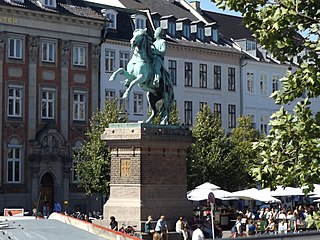
The equestrian statue of Absalon on Højbro Plads in Copenhagen was unveiled in 1902 to mark the 700th anniversary of the death of Bishop Absalon, the city's legendary founder.
Sight 23: Agnete og Havmanden
Agnete and the Merman is a group of bronze sculptures in Copenhagen, Denmark, located underwater in the Slotsholm Canal next to the Højbro Bridge. It has been referred to as one of the least-known works of art in Copenhagen. The sculptures were made in 1992 by the Danish sculptor, photographer, and author, Suste Bonnen. They portray a merman and his seven sons with outstretched arms, begging Agnete to return home. Three other sculptures of merfolk are located in Copenhagen: the "Black Diamond Mermaid", a copy of Anne Marie Carl-Nielsen’s 1921 statue; a large (15-foot) granite mermaid located on the port-of-call cruise ship dock in Copenhagen; and the famous Little Mermaid statue, located on the water’s edge along Langelinie promenade.
Sight 24: Church of Holmen
The Holmen Church is a Parish church in central Copenhagen in Denmark, on the street called Holmens Kanal. First built as an anchor forge in 1563, it was converted into a naval church by Christian IV. It is famous for having hosted the wedding between Margrethe II of Denmark, queen of Denmark between 1972 and 2024, and Prince Henrik in 1967. It is the burial site of such notabilities as naval heroes Niels Juel and Peter Tordenskjold, and composer Niels Wilhelm Gade, and contains artwork by, among others, Bertel Thorvaldsen and Karel van Mander.
Sight 25: Magasin du Nord Museum
Magasin du Nord Museum is a small museum in Copenhagen, where changing exhibitions describe the history of the department store Magasin du Nord. The museum is located in Kong Hans' Vineyard in Vingårdstræde in the same block as Magasin on Kongens Nytorv.
Sight 26: Kongens Nytorv
Kongens Nytorv is a public square in Copenhagen, Denmark, centrally located at the end of the pedestrian street Strøget. The largest square of the city, it was laid out by Christian V in 1670 in connection with a major extension of the fortified city, and has an equestrian statue of him at its centre. The initiative moved the centre of the city from the medieval area around Gammeltorv, at that time a muddy medieval marketplace, to a cobbled new square with a garden complex, inspired by the Royal city planning seen in Paris from the early 17th century.
Sight 27: Det Kongelige Teater
The Royal Danish Theatre is both the national Danish performing arts institution and a name used to refer to its old purpose-built venue from 1874 located on Kongens Nytorv in Copenhagen. The theatre was founded in 1748, first serving as the theatre of the king, and then as the theatre of the country. The theatre presents opera, the Royal Danish Ballet, multi-genre concerts, and drama in several locations. The Royal Danish Theatre organization is under the control of the Danish Ministry of Culture.
Sight 28: Gedser Rev
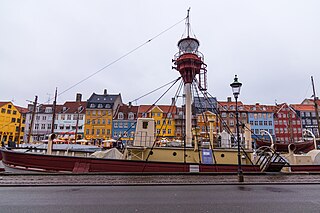
Lightvessel No. XVII Gedser Rev is a decommissioned lightvessel built in 1895, now serving as a museum ship in Helsingør, Denmark, having formerly been stationed in the Nyhavn Canal in Copenhagen. It is owned by the National Museum and takes its name after Gedser Rev south of Falster where it was stationed most of its working life.
Sight 29: Bådteatret
The Boat Theatre is a floating theatre located on an old barge in Nyhavn in Copenhagen. The theatre offers both in-house productions and guest performances. The in-house productions focus on puppet and animation theatre for adults, where classical or philosophical texts are treated. Guest performances are performed by youth theatres, and performances in English are offered to the many tourists who come to Nyhavn. In the periods between performances, there are performing arts projects such as cabarets, poetry readings and cultural dinners.
Sight 30: Skuespilhuset
The Royal Danish Playhouse is a theatre building for the Royal Danish Theatre in central Copenhagen, Denmark. It is situated on the waterfront of the Inner Harbour in the Frederiksstaden neighbourhood. It was created as a purpose-built venue for dramatic theatre, supplementing the theatre's old venue from 1874 on Kongens Nytorv and the 2004 Copenhagen Opera House, which are used for ballet and opera.
Sight 31: Nordatlantens Brygge
North Atlantic House is a cultural centre located on the harbour front in Copenhagen, Denmark, dedicated to preserve, promote and communicate culture and art from the North Atlantic area. It is made as a cooperation between Denmark, Iceland, Greenland and the Faroe Islands and includes three galleries as well as conference facilities. The centre also houses the Icelandic embassy and the permanent representations of Greenland and the Faroe Islands, as well as some commercial activities and enterprises related to the area.
Sight 32: Freetown Christiania
Freetown Christiania, also known as Christiania or simply Staden, is an intentional community and commune in the Christianshavn neighbourhood of the Danish capital city of Copenhagen. It began in 1971 as a squatted military base. Its Pusher Street is famous for its open trade of cannabis, which is illegal in Denmark.
Sight 33: Christianshavns Enveloppe
Christianshavns Enveloppe is a former system of outworks located in front of Christianshavns Vold and Stadsgraven, on Amager. in Copenhagen, Denmark. Its well-preserved, northern half is now part of Freetown Christiania and known as Dyssen. Its southern portion was removed in the first half of the 20th century and has now been replaced by a public park, Enveloppeparken.
Sight 34: Copenhagen Opera House
Get Ticket*The Copenhagen Opera House is the national opera house of Denmark, and among the most modern opera houses in the world. It is also one of the most expensive opera houses ever built at a cost of 2.5 billion DKK. It is located on the island of Holmen in central Copenhagen.
Share
Disclaimer Please be aware of your surroundings and do not enter private property. We are not liable for any damages that occur during the tours.
GPX-Download For navigation apps and GPS devices you can download the tour as a GPX file.
